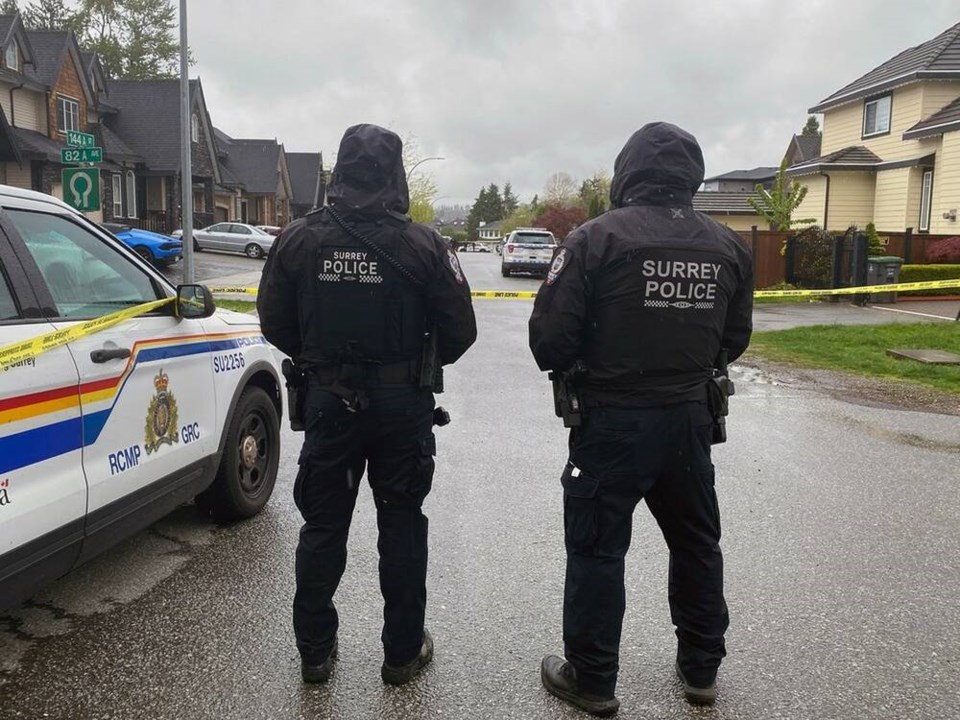B.C. will get more than $54 million in federal funding to help tackle an expanding gang and gun violence problem, Public Safety Minister Marco Mendicino announced Monday.
The cash is part of a commitment to invest $390 million across the country for programs “to stop gun crime and gang violence before it starts.”
The money will be provided over the next five years as part of the “Initiative to Take Action Against Gun and Gang Violence,” which was first announced in 2017 for an array of efforts to combat gang violence.
From 2018 to 2023, B.C. was allotted $30,530,488 under the program — so would be seeing a substantial increase.
Past funding in this province has been used to support the Organized Crime Agency of B.C., which targets “gun smuggling, drug trafficking and other forms of organized crime,” Mendicino said.
The $390 million is separate from the $250 million Building Safer Communities Fund announced in March 2022 to “provide funding directly to municipalities and Indigenous communities to support local initiatives that prevent gun and gang violence and help young people make good choices.”
Just last month, B.C.’s anti-gang Combined Forces Special Enforcement Unit announced that the 10-year-old Lower Mainland gang conflict is now provincewide with gangs once centred in Metro Vancouver moving around the province to expand their drug lines, meaning the violence has spread as well.
Police have linked the May 2 Surrey murder of Jayden Prasad, 20, to the B.C. gang conflict as well as other recent shootings across the region.
The Lower Mainland gang war stemmed from a local Abbotsford dispute that began in the city’s Townline Hill neighbourhood about a decade ago and involved about 40 youth linked to the drug trade. By 2015, Abbotsford Police warned the public about the leaders of two main groups — an off-shoot of the United Nations gang versus the then-fledgling Brothers Keepers.
The conflict was at one time distinct from an older war between the Red Scorpions and the United Nations gang. But now the dispute is murkier with younger gangsters regularly switching allegiances and some of the bad blood from the original conflict still in play.
Mendicino said “the safety and security of Canadians is our government’s top priority.”
“The best way to keep people safe is to stop crime and violence before it starts,” he said. “Today’s announcement will give additional resources to law enforcement, support young people in making good choices and help our communities thrive. Strong prevention strategies like these are central pillar in our plan to ensure Canadians are safe in their communities.”
Mendicino said the cash commitment comes on top of increased border security measures and “deepened co-operation with the United States to fight gun smuggling.”
And he touted other government measures like Bill C-21, the proposed ban on assault-style firearms and upcoming bail reform.
In fact, Bill C-21 faced criticism from hunters and other gun owners for several proposed amendments to the bill defining assault-style rifles that the government later withdrew.
On May 1, Mendicino introduced a revised set of amendments to the proposed legislation that included a new definition of prohibited firearms that covered off gun with the “characteristics of an assault-style firearm.”
“This is a forward-looking definition, meaning it would not apply to firearms currently on the market,” the government news release said — something immediately criticized by gun-control advocates.
Mendicino said the changes would “bolster Canada’s ban on assault-style firearms, while respecting hunters and law-abiding gun owners. They will also crack down on the emerging threat of ghost guns and establish a new panel to take the misinformation out of these debates.”



